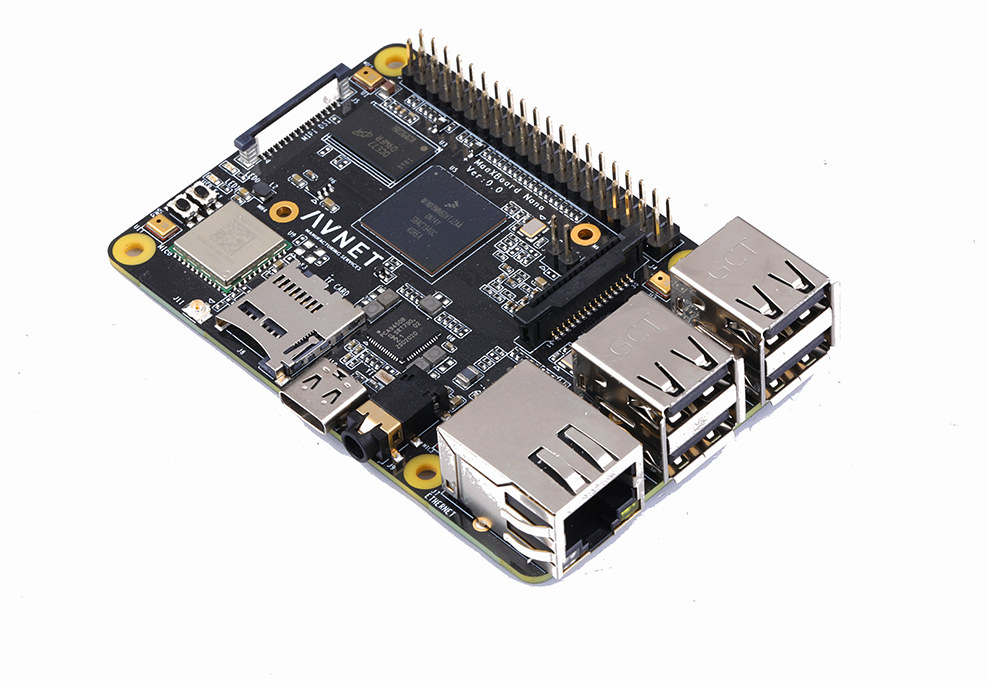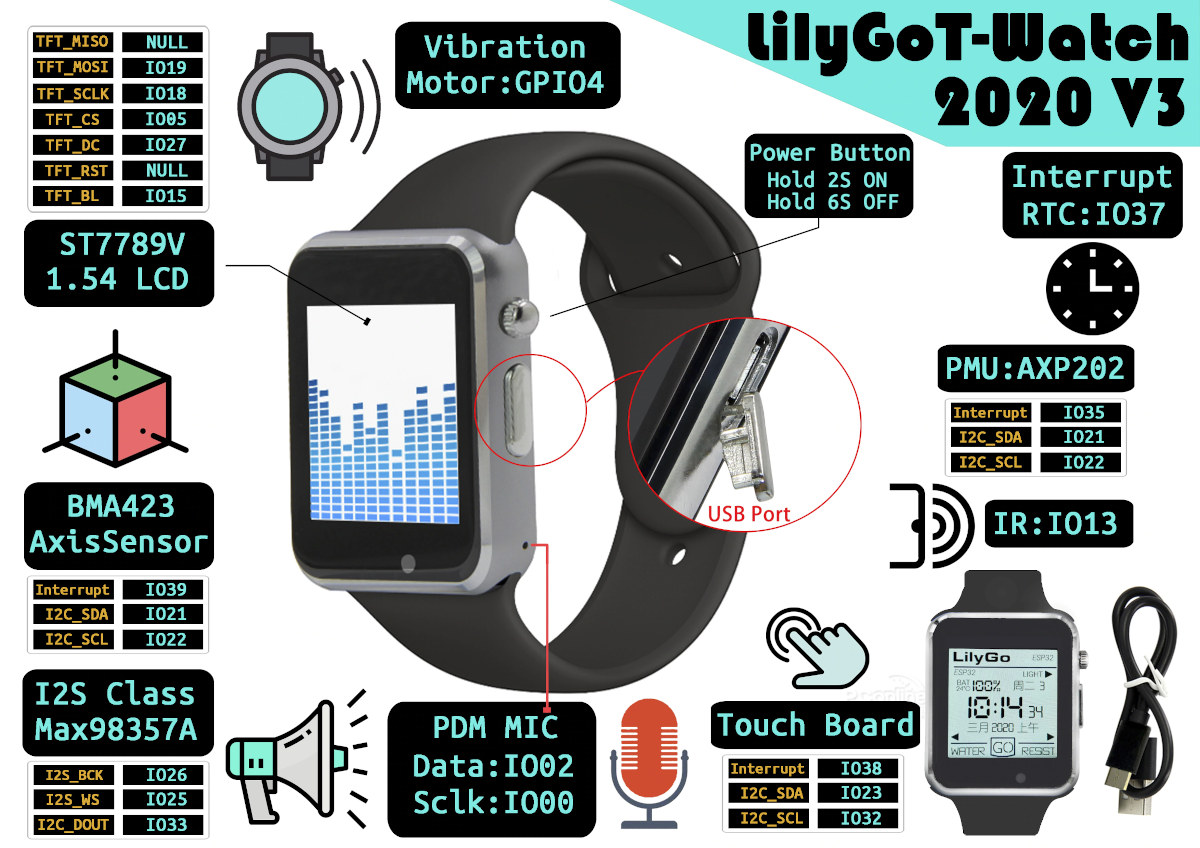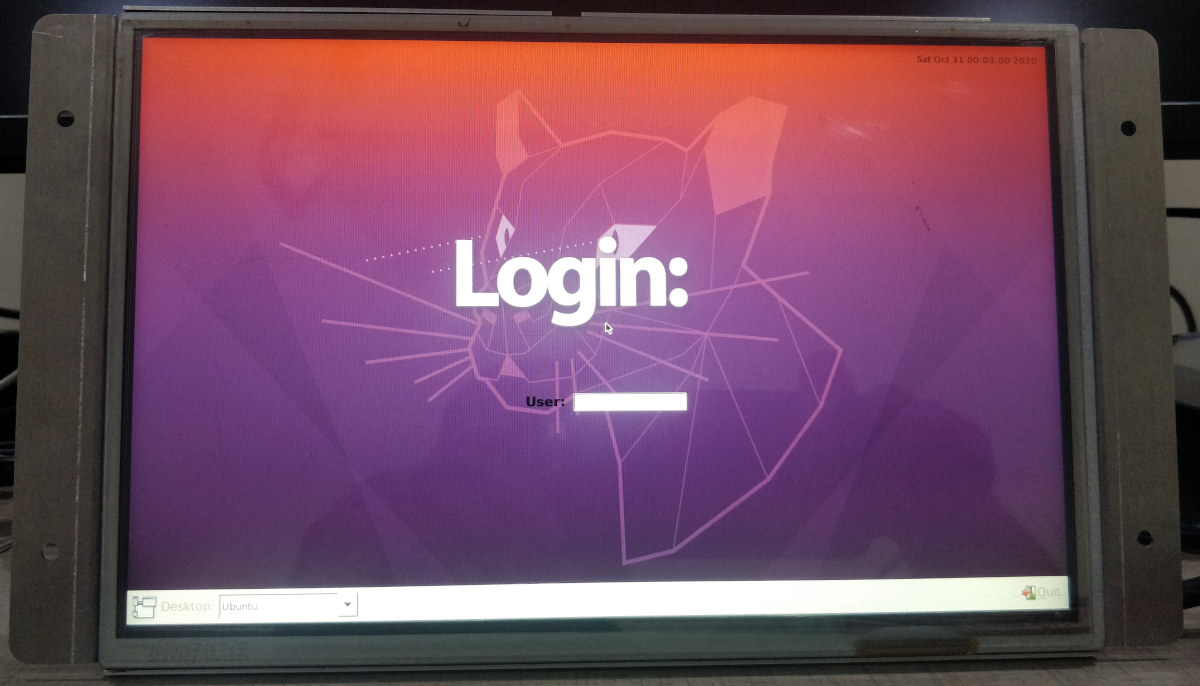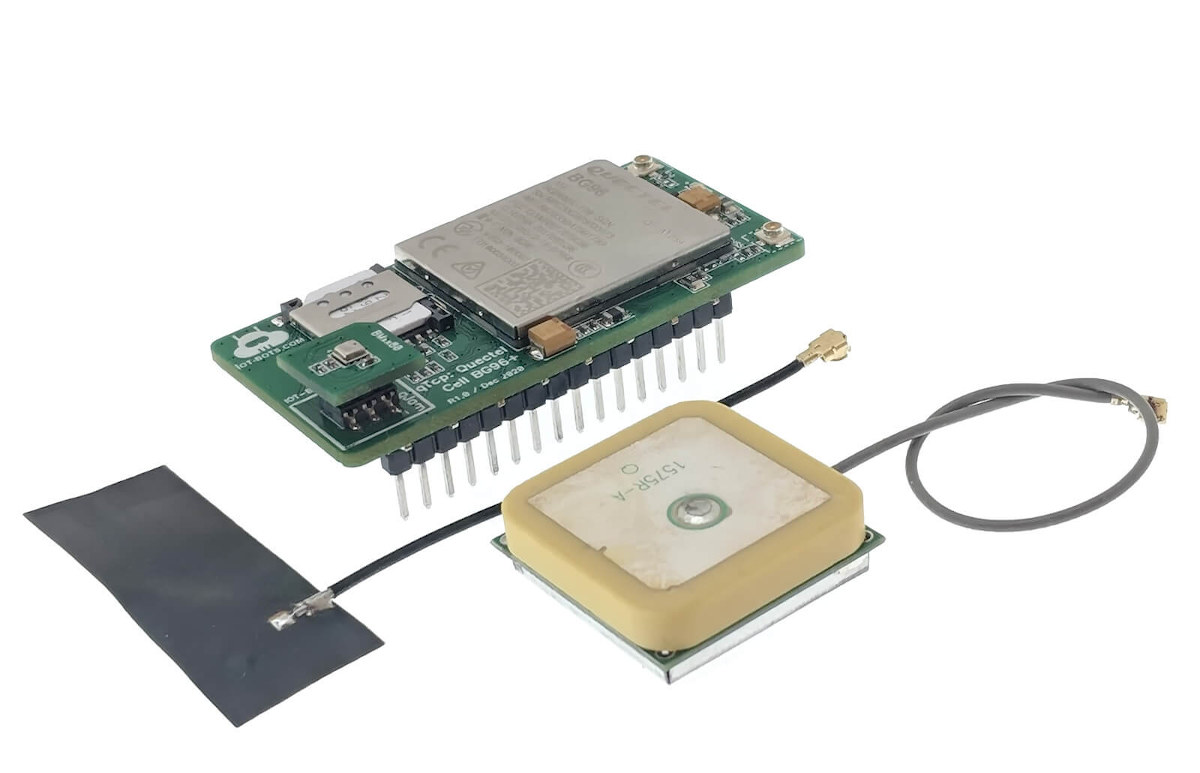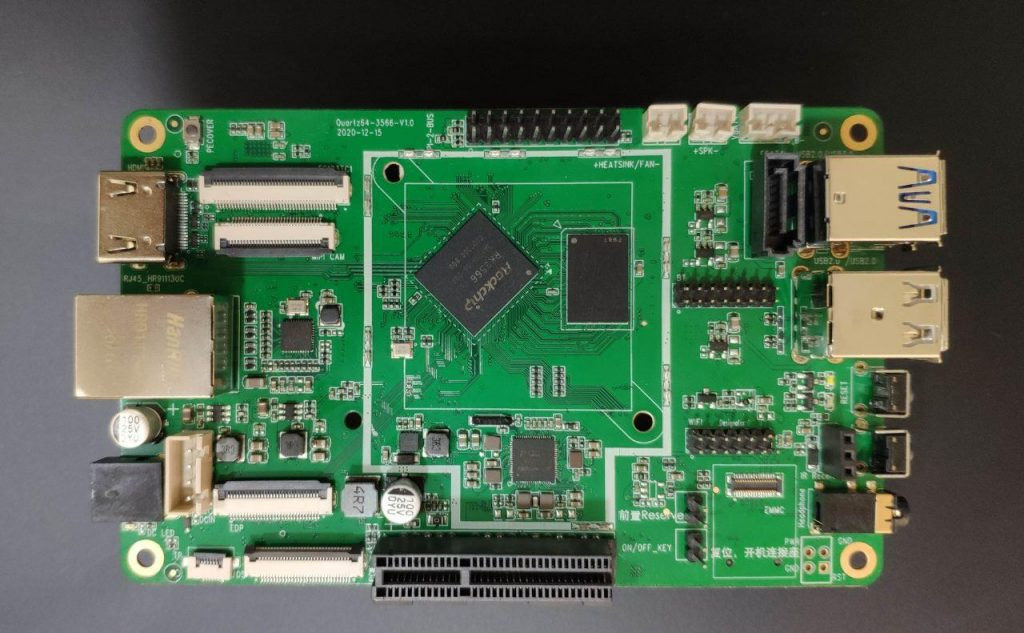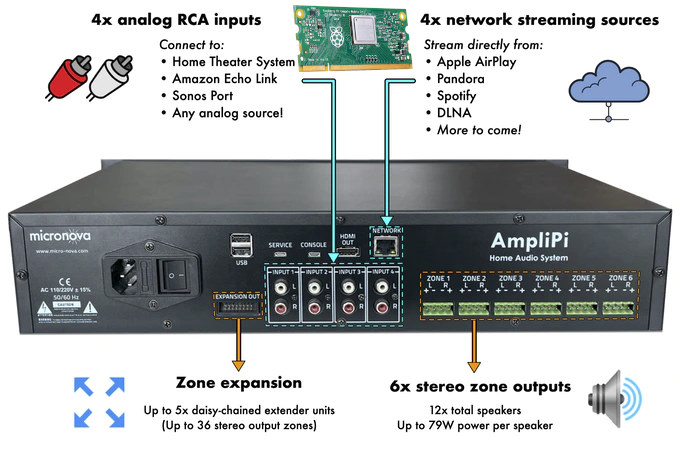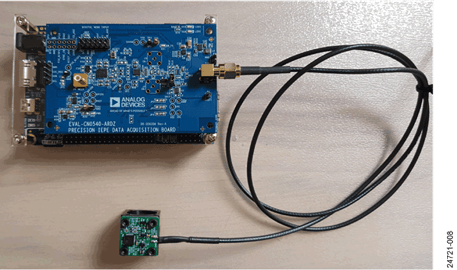Avnet has launched several Raspberry Pi-inspired MaaXBoard SBCs based on NXP i.MX processors through their Embest subsidiary starting in 2019 with MaaXBoard single board computer powered by an NXP i.MX 8M processor, and following by MaaxBoard Mini with NXP i.NX 8M Mini SoC in 2020. The latest model is MaaXBoard Nano SBC with an NXP i.MX 8M Nano quad-core Cortex-A53 processor best suited to audio and edge IoT applications. MaaxBoard Nano SBC specifications: SoC – NXP i.MX 8M Nano quad-core Arm Arm Cortex-A53 processor @ up to 1.5GHz with Cortex-M7F core @ 750MHz, 2D GPU, 3D GPU, but no video hardware decoding. System Memory -1GB DDR4 SDRAM Storage – 16GB eMMC flash, 256 Mbit QSPI Flash, MicroSD Slot Display Interface – MIPI DSI display Interface Audio – 3.5mm audio jack, 4x built-in microphones Camera I/F – MIPI CSI Camera Interface Networking – Gigabit Ethernet, 802.11 b/g/n/ac WiFi 5, Bluetooth 4.2/5 […]
TTGO T-Watch-2020 V3 ESP32 watch adds microphone for voice control
Lilygo TTGO T-Watch-2020 is a thin, ESP32 smartwatch programmable with Arduino that was introduced last year. The WiFi and Bluetooth-connected watch is equipped with a 1.54-inch LCD capacitive touch screen, a Class-D amplifier, buzzer, accelerometer, RTC, and a battery. The watch is one of the top-selling devices on Lilygo’s Aliexpress store, and they must have had requirements for voice control, so the company has now launched TTGO T-Watch-2020 V3 based on the same design but adding a PDM microphone. As far as I can TTGO T-Watch-2020 V3 specifications are the same as last year’s model, except for the microphone: SoC – Espressif ESP32 dual-core wireless processor with 520KB SRAM System Memory – 8MB PSRAM Storage – 16MB QSPI flash Display – 1.54-inch LCD capacitive touch screen Audio – Max98357 Class-D amplifier, buzzer/speaker, PDM microphone Connectivity – 802.11b/g/n WiFi 4 and Bluetooth 4.x/5.1 via ESP32 Sensors – BMA423 three-axis accelerometer with […]
Engicam PX30.Core SoM & devkit run Ubuntu 20.04 with mainline Linux
Linux 5.11 was released a few days ago, and it’s always interesting to check out the changelog to find new hardware platforms that support mainline Linux. One of those is Engicam PX30.Core SoM based on Rockchip PX30 quad-core Arm Cortex-A35 processor. Engicam also worked with Amarula Solutions to develop an Ubuntu 20.04 image with mainline Linux compatible with EDIMM 2.2 and CTouch 2.0 carrier boards for PX30.Core CPU module. Engicam PX30.Core SoM Specifications: SoC – RockChip PX30 quad-core Arm Cortex-A35 @ 1.2GHz with Mali-G31 MP2 GPU with support for OpenGL ES 1.1, 2.0, and 3.2, OpenCL 2.0, Vulkan VX 1.0, 1080p60 video encoding/decoding System Memory – Up to 2 GB DDR4 Storage – 4GB eMMC flash (other capacities on request) Audio – Audio codec on module SO-DIMM edge connector Display Interfaces – 24-bit Parallel RGB, 18/24-bit LVDS Camera interface – 4-lane MIPI-CSI for up to 8MP camera Audio – I2S […]
7.8-inch PocketBook InkPad Color eReader launched for $329
Color eReaders and color e-Ink smartphones have started to show up last year with products such as Onyx Boox Poke2 Color, PocketBook Color, or Hisense A7 CC with displays ranging from 6-inch to 6.7-inch in size. If you like the idea of having a color eReader, but would prefer a (slightly) large display, PocketBook InkPad Color may be an interesting option with the eReader featuring a 7.8-inch Kaleido e-Ink display with 4096 colors. PocketBook InkPad Color specifications: Processor – Unnamed dual-core processor @ 1 GHz (probably Allwinner B288 dual-core Arm Cortex-A7 processor) System Memory – 1GB RAM Storage – 16GB eMMC flash, and microSD card reader up to 32GB Display – 7.8 inch E-Ink Kaleido display with 1872 x 1404 (16 shades of grey – 300 ppi) or 624 x 468 (color – 100 ppi) resolution, capacitive touch, and front-light Connectivity – WiFi 4 and Bluetooth (e.g. for audio) USB […]
Feather compatible shield Integrates BG96 Module with LTE Cat-M1, NB-IoT, and GPS
Last week, I wrote about the Pebble Board, an nRF9160 based LTE-M and NB-IoT GPS tracker board that connects with Thingsboard. I was soon informed about a similar solution based on Quectel BG96 and compatible with the Feather form factor. Meet IoT-Bots.com’s qTop Adafruit Feather Compatible shield. In case you wonder, why they did not call it a FeatherWing, that’s because as it’s slightly larger, and the boards are “Adafruit Feather Compatible (AFC) from the interface connection perspective only.” Key features and specifications: Wireless module – Quectel BG96 Cellular – LTE Cat M1, NB-IoT, and EGPRS module offering maximum data rates of 375 kbps downlink and uplink GNSS – GPS, GLONASS, BeiDou/Compass, Galileo, QZSS Nano SIM card holder and u.FL connector (3) for cellular connectivity u.FL connector (4) for GNSS Expansion Feather expansion connector (11) 6-pin qJam interface connector (12) with I2C for extra sensors Misc – Network status LED, […]
Pine64 unveils Quartz64 SBC powered by Rockchip RK3566 SoC
We may just have written about Geniatech RK3566/RK3568 development board, but as expected, Pine64 has now unveiled more details about Quartz64 SBC powered by Rockchip RK3566 SoC. As we’ll see below, the design is very similar to RK3399 based RockPro64, but the new model adds a native SATA 3.0 port, an integrated battery charging circuitry, an ePD port for e-Ink displays, and supports more memory with up to 8GB LPDDR4 RAM. Quartz64 Model A preliminary specifications: SoC – Rockchip RK3566 quad-core Cortex-A55 processor up to 1.8 GHz with Arm Mali-G52 GPU supporting OpenGL ES 1.1/2.0/3.2, OpenCL 2.0, Vulkan 1.1, 0.8 TOPS NPU for AI acceleration System Memory – 2GB to 8GB LPDDR4 Storage SPI Flash optional eMMC module from 16GB up to 128GB capacity bootable SDHC/SDXC MicroSD card up to 256GB (or is it 2TB?) SATA 3.0 port (multiplexed with USB 3.0) Video Output / Display Interfaces HDMI 2.0a up […]
AmpliPi – A Raspberry Pi-based whole house audio amplifier (Crowdfunding)
Micro Nova has put together an open-source, whole-house audio amplifier called AmpliPi based on Raspberry Pi Compute Module 3+. It is capable of streaming four independent sources to 6 stereo output zones, expandable to up to 36 stereo output zones through daisy-chained extender units. AmpliPi specifically supports inputs from four networking streaming sources including AirPlay, Pandora, Spotify, and DLNA, as well as four analog RCA inputs for your media appliances. AmpliPi key components and features: Controller Board Carrier board fitted with Raspberry Pi Compute Module 3+ and PCM5102A & CM6206 audio DACs. It also communicates over I2C with the STM32 MCU on the Preamp board (see below) to control the muxing and amplification systems. Interfaces 10/100M Ethernet port HDMI 1.4 output 2x USB 2.0 ports, plus one internal USB port Service and console ports for maintenance and/or debugging. Preamp Board Board equipped with a 6×4 audio matrix switching system and […]
CN0549 CBM development kit monitors assets through vibration analysis
Condition Based Monitoring (CBM) has become quite popular in the manufacturing sector due to its advantages. It is a type of pre-analysis monitoring that includes the use of sensors to evaluate the status of an asset over time while it is in operation. Hence, the data collected is used to establish trends, predict failure, and measure the life of an asset. Analog Devices has launched CN0549, a condition-based monitoring development kit. The monitoring functionality signifies the consideration for hardware applications involving vibration. The applications include industrial as well as IoT devices. Hence, the CN0549 CBM development board combines the resources for a dynamic domain of users. Discussing further, condition-based monitoring (CBM) through vibration sensing requires the capturing of full-bandwidth data to ensure that all harmonics, aliasing, and other mechanical interactions are taken care of in both, the time and frequency domain. The data collection by using the sensors and data […]


